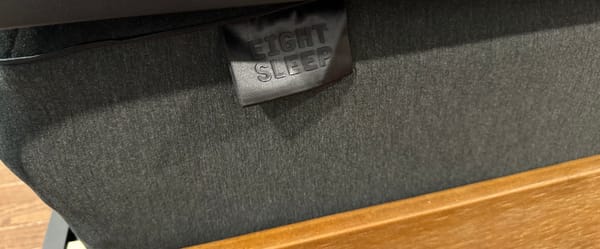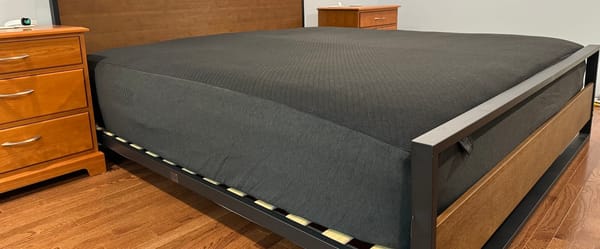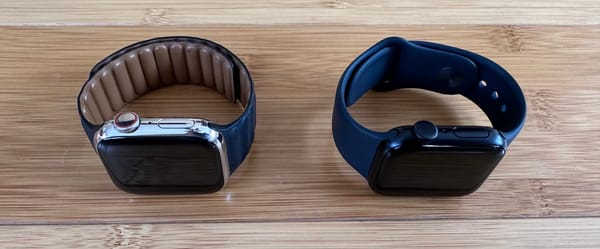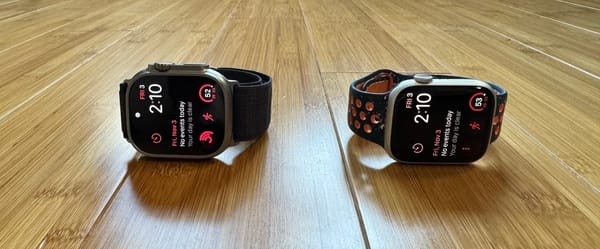Eero Home WiFi Review: Is It the Future of Home WiFi?
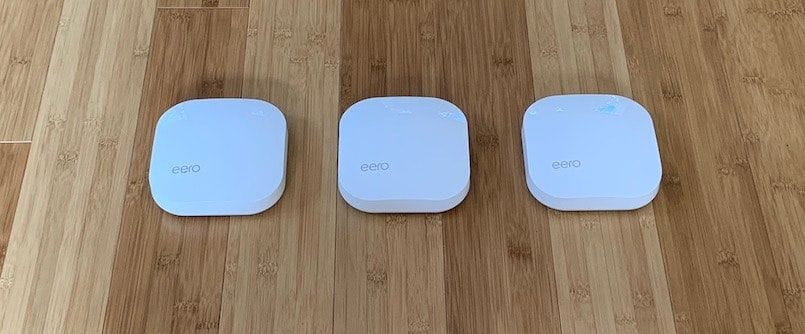
In January 2016, my Twitter feed blew up with people praising the Eero Home WiFi System. Users claimed their WiFi speeds increased by three times with Eero.
Eero promised their mesh network was the solution to common router issues.
Watch Eero’s marketing video. It speaks to the struggles people have with WiFi: issues setting up, updating software, manual resets, and the ugly, pre-existing routers on the market.
The three piece Eero system is $500 (or a $200 for an individual Eero).
I was happy with my setup; I had no dead spots and received the internet speed I paid for.
I still caved.
I bought a three-piece system for $500 to see if it lived up to the hype.
I tested my Apple router from eight different spots in my house. (I pay for 20Mbps through my internet provider.)
Surprisingly, during tests, I got between 22-23Mbps in all eight spots.
I didn’t think my Eero setup would be able to beat those speed scores, but others claimed to get faster speeds.
Let’s start with the setup.
The entire setup is done through the phone. You download the app and it tells you where and when to plug in the wires.
It took 15 minutes to have the whole system up and running. It would’ve been faster, but I was trying to be strategic about where I placed each router.
I put the main router in my bedroom, which pumped the signal to the living room router, and the third one in the kitchen.
This just about covered the whole downstairs floor.
The setup was unbelievably simple. There’s no need to plug in your router to your computer with an ethernet cord during the setup. Also, you can skip the part of running outdated software off of an old CD.
The results?
I checked my speed in the same spots, and got the exact same results. I was happy with my previous setup, so it was a bit disappointing since I had irrational and unrealistic expectations about the new setup.
After the initial setup, I got a message saying Eero will optimize my system over a 24-hour period.
I got an email the next day saying my system had been successfully optimized:
But my speed stayed the same.
I ran a test, having both roommates stream content at the same time to see if I’d be able to stream too, but we had buffering issues.
We still can’t stream with three devices running concurrently. This makes sense. I wasn’t expecting the ability, but I wanted to experiment.
Three possible reasons my experience hasn’t been the same as others:
I live in a house and the houses on my street are spaced out. There aren’t many WiFi signals in the air, causing less interference of signals. When I check the available WiFi signals there are only six that show up. If you’re in a big apartment complex in the city, there’s a chance there are over 50 different signals simultaneously in the air.
- My house is only 1,200 square feet.
- I already had a premium WiFi router.
Love
- You can get by with just one Eero router. You’ll get great speed and it is easy to use. You can add as many Eeros as you’d like. The three pack (for $500) offers the best value.
- A range extender increases the range of the WiFi but will cut speed in half because it’s creating two separate networks. With the Eero system, you don’t sacrifice speed for additional range because of their mesh networking. So, if your house is big, your areas of no signal will disappear while your speed stays the same.
- Eero makes it easy to give friends access to your WiFi by sending them a token via text message. There’s no need to give them a WPA2 password.
- The boxes are relatively small (4.75″ x 4.75″ x 1.34″) and beautiful.
- We’ve had buffering issues while watching a movie. To fix this, we unplug the router, wait 30 seconds, and pray everything has been properly reset. Eero automatically detects these issues and resets itself in the background. Also, one can manually reset from the app without getting off the couch.
- Everything is controlled through the phone app. This isn’t a new concept: Google’s new OnHub router does this, and Apple’s Airport Extreme gives you this option too. It’s the way WiFi setup should be.
Hate
- It’s pricy. This is one of the first mesh networking solutions (multiple routers talking to one another), so the price will inevitably come down as more competitors enter the market. If the $500 system isn’t your style, buy one Eero for $200. This would be a fine router, but you get better value with an Apple Airport Extreme for $150.
- For the best experience, have the Eeros in sight of one another (i.e. Eero #1 sees Eero #2 and Eero #2 sees Eero #3). It’s recommended, but may not be essential depending on your home/apartment layout. Also, you have the option of hardwiring Eero’s together via an ethernet cable, but this takes away from the simplicity.
Who is this for?
If you have a big house with spots where the WiFi signal is insufficient, the Eero is definitely worth getting.
If money isn’t an issue, get this. It’s the best router on the market. However, it’s only incrementally better than the Apple Airport Extreme, yet you’re paying 25% more for the one-piece system, or three times more for the three-piece system.
It’s an incredibly convenient router but is it worth the price? For me, no.
I sold my Eero system and went back to my Apple Airport Extreme setup.

